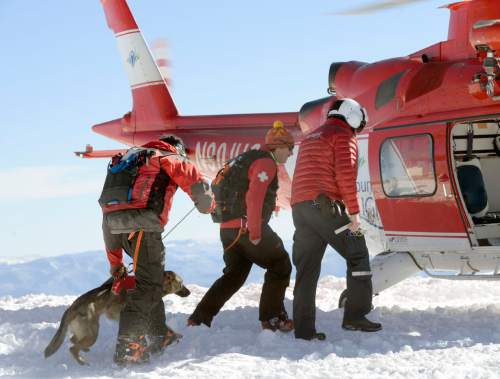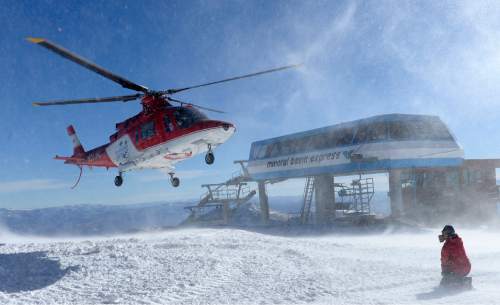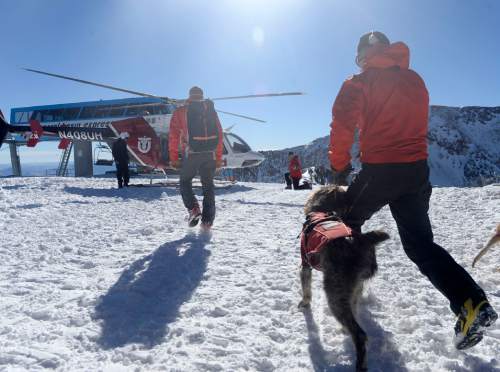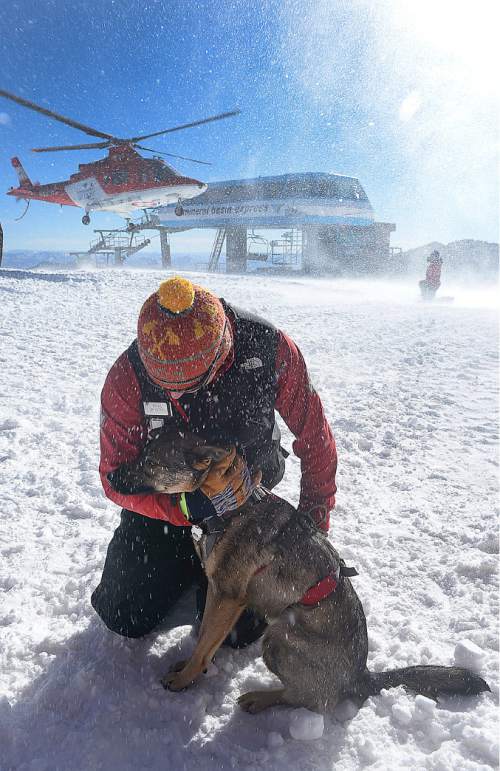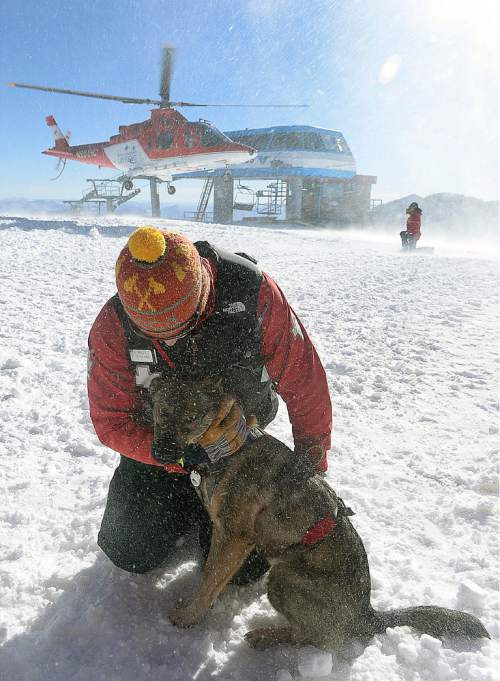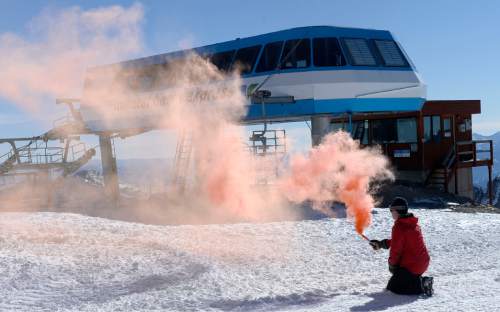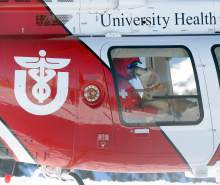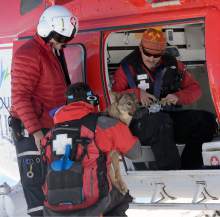This is an archived article that was published on sltrib.com in 2014, and information in the article may be outdated. It is provided only for personal research purposes and may not be reprinted.
Little Cottonwood Canyon • Scanning the crevices and peaks in the sweeping mountain vista from Little Cottonwood Canyon's Hidden Peak, backcountry rescue leader Travis Skinner on Friday asked a team of emergency dispatchers to imagine all the places an injured hiker or skier might be stranded when they call 911.
"You can see how difficult it is when you're asking them, 'Where are you?' " said Skinner, a sergeant for the Unified Police Department and supervisor of Salt Lake County Search and Rescue.
The dispatchers, who typically take urban and suburban 911 calls from behind a radio console, took in the dramatic topography and chuckled when Skinner pointed out that they likely won't help an avalanche victim by saying, "Just wave down the ambulance when you see them."
While dispatchers transmit orders and information to direct backcountry rescue personnel on a regular basis, most have no experience with the highly specialized teams and tactics, particularly those that go into a winter operation. They watched demonstrations by medical helicopters and avalanche search dogs, learned about skier safety and rescue protocols.
"It gives us an idea of what they're actually doing," said Deb Penrod, dispatcher for Unified Police. "It helps us understand what they need from us."
Instructors stressed that, in backcountry rescue, locating and reaching the victim takes much longer than on city calls. That changes the script, Skinner said.
"Every second counts," Skinner said. "Getting stuck on, 'Are they conscious, breathing and alert?' is great in an urban situation. 'Are there any bad injuries?' In an avalanche, we just assume there are. We've gotta start thinking backcountry rescue, not urban rescue."
Rather than trying to assess the problem in a backcountry emergency, dispatchers should focus only on the caller's location and transmit that information immediately to the search and rescue team so they begin getting to the scene, Skinner said.
"Most people call [911] and throw out a name, like, 'We're in the Coal Pit,'" Skinner said, referencing an area near Thunder Mountain.
Dispatchers are not expected to know or even recognize all place names of the Wasatch backcountry, many of which are informal. Instead, they are instructed to recognize, "That means nothing to me, but I know it means something to the [rescuers] I'm talking to," Skinner said.
Viewing the scale of the mountain terrain helps drive home the priority of location, said Shelli Jacobson, a dispatcher for UPD.
"It helps us to see the timeframe" to reach a mountain location, Jacobson said. "You know this in your head, but the visual makes a difference."
The training comes on the eve of the likely start of avalanche season, said Utah Avalanche Center forecaster Brett Kobernik. He advised all backcountry users to check avalanche warnings and take beacons, probes and shovels to prevent the need for a rescue.
"We're anticipating a big storm this weekend. The avalanche danger will skyrocket," he said. "Hopefully these guys won't have to put all this to work." —
Avalanche danger
The risk of avalanches in the Wasatch Mountains is expected to rise rapidly Saturday with the forecasted snowfall, and that danger will likely persist through at least Monday. › BX


